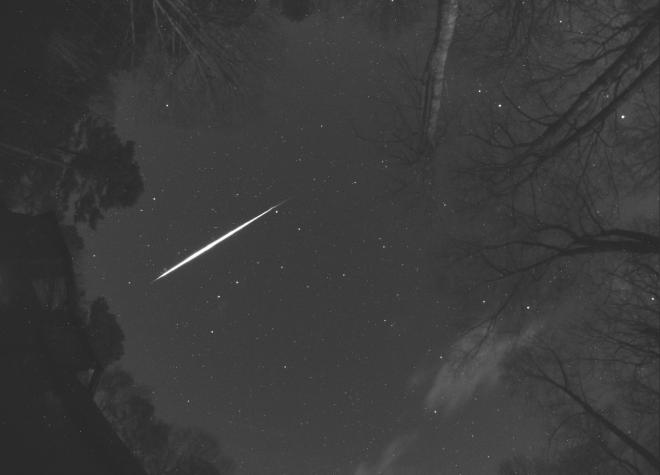How to view the 2022 Geminid meteor shower
December 8, 2022
By Amy Sayle
One of the best sky shows of the year – the Geminid meteor shower – is already underway, and is expected to peak the nights of December 13 and 14, 2022.
This year, there’s some bad news about the moon phase. Once the waning gibbous moon rises later in the evening on those peak nights, its bright light will wash the dimmer meteors from view.
But there’s good news: the Geminid meteor shower is famous for producing decent meteor activity reasonably early in the evening. We’ve typically seen meteors as early as 8 p.m. at Geminid skywatching events.

Tips for viewing this year’s Geminids:
- Know what you’re looking for. Meteors, sometimes misleadingly called “shooting stars,” are streaks of light caused by cosmic debris interacting with Earth’s atmosphere. Typically, this debris has been left by a comet, but in the case of the Geminids, the source is an asteroid, 3200 Phaethon. Normally, under ideal conditions, you might see up to a couple of Geminid meteors per minute on average. But expect this year’s moonlight to reduce the number. Lower your expectations even further if, like most of us, you’re contending with artificial light pollution, too.
- Check the weather. You will not see meteors if it’s overcast or raining.
- Pick your date and time. If the weather looks poor for Tuesday, December 13, 2022, try the next night. To avoid the interfering light of the Moon, you might plan your viewing during the hour or two before moonrise, which happens around 10 p.m. on the 13th, and 11 p.m. on the 14th. Note that moonrise times vary a bit by location.
- Find a dark location with an open view of the sky. If the weather permits, join us at Little River Regional Park on Tuesday, December 13, 2022, from 8 to 10 p.m. for a free skywatching event. If you plan to watch from your neighborhood, turn off your house lights. Consider inviting your neighbors to turn off their lights, too, and join you in meteor viewing.
- Look toward the darkest part of your sky. Look away from unshielded lights. If the Moon has risen, look away from it.
- Don’t worry about knowing how to identify Gemini. If you trace a Geminid meteor back, it will have originated from the direction of the constellation Gemini. But the meteors can appear in any part of the sky. You don’t need to know how to identify Gemini to see them.
- Pack your supplies. You’ll undoubtedly want super-warm clothes and maybe a thermos with a hot drink. A blanket, sleeping bag, or reclining chair will help you view the sky without craning your neck. What you don’t need: A telescope. It’s nice for viewing other objects in the sky, but it restricts the view way too much for observing meteors. You also won’t want to use your phone or white flashlights, which will hurt your night vision and that of everyone around you.
- Remember to look up! And be patient. It takes time for your eyes to adjust to the dark, and the meteors can come in clumps with none for minutes at a time.
We hope you can join us Tuesday, December 13th, 2022, from 8 to 10 p.m., at Little River Regional Park (if the weather cooperates). In addition to meteor viewing with just our eyes, we’ll have telescopes available for close-up views of Saturn, Jupiter, Mars, and other celestial wonders.
